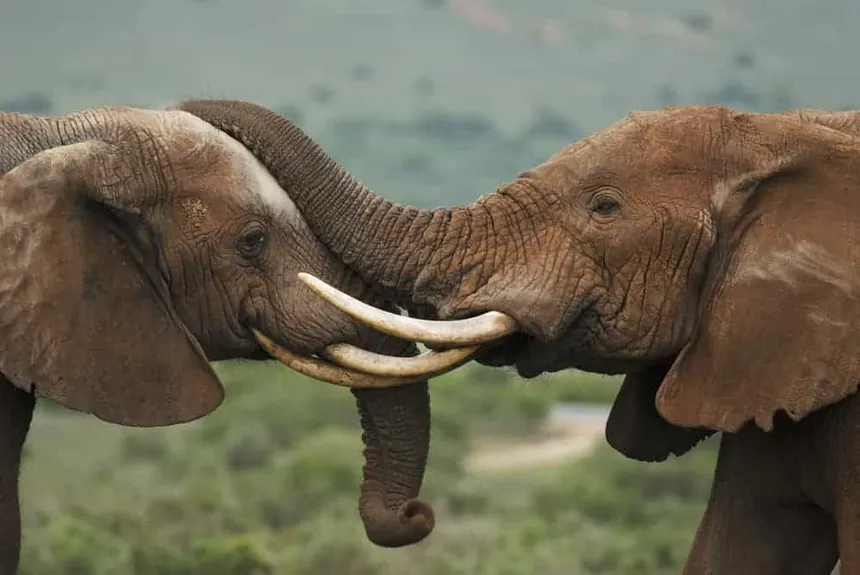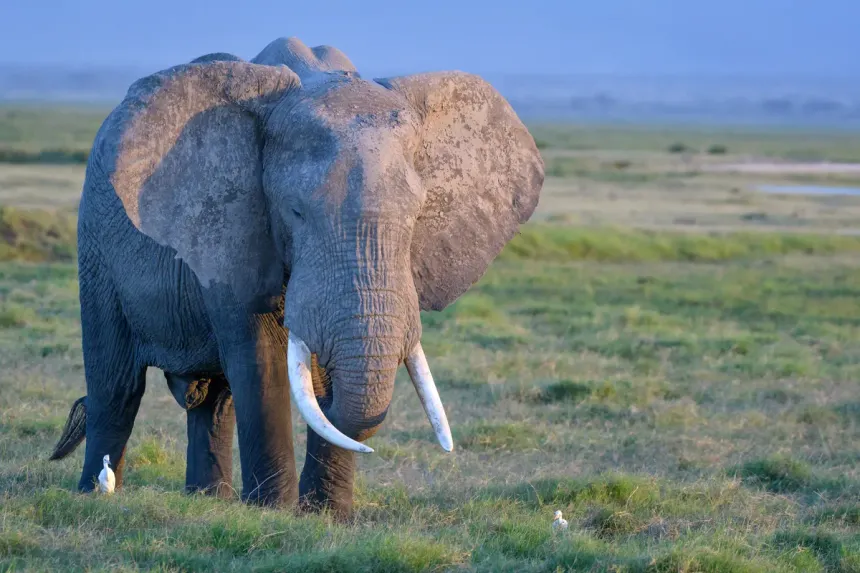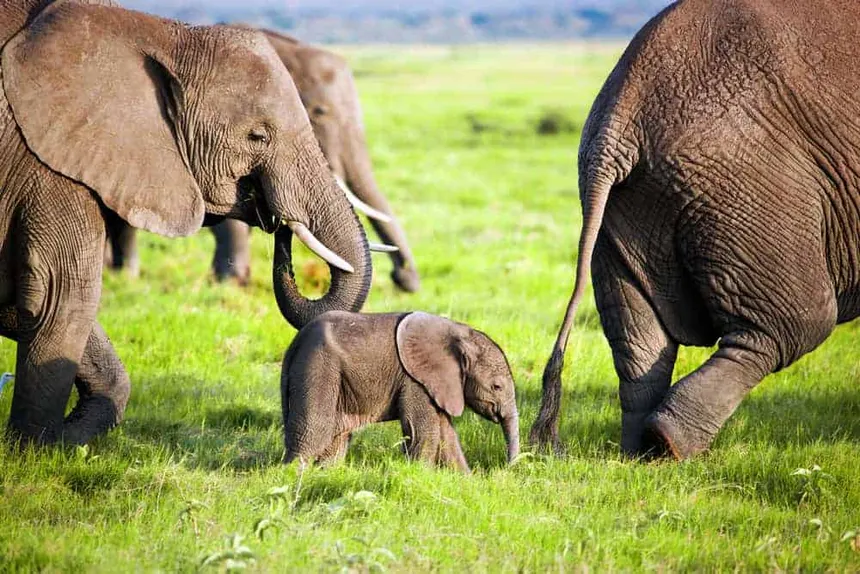10 interesting facts about Elephants

Elephants are some of the most majestic, intelligent, and emotionally complex animals on Earth. Revered in cultures around the world and recognized for their massive size and distinctive trunks, elephants are not only the largest land mammals but also among the most fascinating creatures in the animal kingdom.
This detailed article explores 10 captivating facts about elephants—covering their biology, social behavior, intelligence, and more—offering a deep dive into the lives of these gentle giants.
🐘 1. There Are Three Species of Elephants
Elephants belong to the family Elephantidae and are divided into three distinct species:
- African Savanna Elephant (Loxodonta africana) – the largest species, found in grassy plains.
- African Forest Elephant (Loxodonta cyclotis) – smaller, with straighter tusks and found in dense rainforests.
- Asian Elephant (Elephas maximus) – slightly smaller than African elephants, with smaller ears and a more domed head.
Each species differs in size, ear shape, tusks, and habitat, yet all are endangered or vulnerable due to habitat loss and poaching.
🧠 2. Elephants Are Incredibly Intelligent
Elephants have large brains, weighing over 5 kg (11 lbs), and their intelligence rivals that of dolphins, apes, and some birds.
- They recognize themselves in mirrors, a rare trait in the animal world.
- Display empathy and grief—mourning their dead.
- Use tools such as sticks to scratch themselves or leaves to swat insects.
- Can learn commands, solve problems, and remember water sources for years.
Their long memory isn’t a myth—studies show elephants can recall companions and danger zones after decades.
🐾 3. Their Trunks Are Multitools of Nature
An elephant’s trunk is a fusion of the nose and upper lip, containing over 40,000 muscles and no bones.
Functions include:
- Breathing and smelling
- Sucking up and squirting water (up to 10 liters at once)
- Picking up objects (from tiny peanuts to large logs)
- Expressing emotions through touch and gestures
- Trumpeting sounds to communicate danger or excitement
Elephants can even use their trunks delicately enough to pick up a single blade of grass or strongly enough to uproot a tree.
🦷 4. Elephants Have Unique Tusks—But Not All Have Them
Tusks are actually elongated incisors, and they continue to grow throughout the elephant’s life.
- Both male and female African elephants have tusks.
- In Asian elephants, only males usually grow tusks.
- Some elephants are “tuskless” due to genetics or as an evolutionary response to poaching.
Elephants use their tusks for:
- Digging for water or minerals
- Peeling bark off trees
- Defense and display during fights
Sadly, ivory poaching remains a major threat to elephant populations.

🌍 5. Elephants Shape Ecosystems
Elephants are known as “ecosystem engineers.”
- They dig water holes used by other animals during dry seasons.
- Knock down trees, which clears the way for grasses to grow—supporting other herbivores.
- Disperse seeds over long distances through their dung.
Their daily activities literally reshape the landscape, making elephants vital to biodiversity in their ecosystems.
👶 6. They Have Strong Family Bonds
Elephants live in matriarchal herds, led by the oldest and most experienced female.
- Herds consist mostly of mothers, daughters, sisters, and aunts.
- Calves are cared for not just by their mothers but by “allomothers” (other females).
- Male elephants leave the herd around 12–15 years of age and live more solitary or form loose bachelor groups.
Elephant families are extremely social, often touching, trumpeting, or playing together.
🍼 7. Elephant Calves Are Born Big—and Grow Slowly
- A baby elephant (calf) weighs around 100–120 kg (220–265 lbs) at birth.
- Gestation lasts 22 months—the longest of any land mammal.
- Calves suckle for up to 2–3 years, though they start trying solid food after a few months.
- Elephants don’t reach full adulthood until 20–25 years.
Their slow growth reflects their long lifespan—up to 60–70 years in the wild.
🦻 8. Their Ears Help Regulate Body Temperature
Elephants’ ears serve more than just listening:
- They have large blood vessels under the thin skin of their ears.
- By flapping their ears, elephants cool their blood, which helps lower body temperature.
- African elephants have larger ears than Asian elephants—an adaptation to hotter environments.
Their ears also function as signals during social interactions and threats.
🔊 9. Elephants “Talk” Through Infrasound
Besides trumpeting, elephants communicate with low-frequency sounds (infrasound) below human hearing range.
- These sounds can travel several kilometers, allowing herds to stay in touch even when out of sight.
- They also detect these vibrations through their feet, picking up seismic signals.
This extraordinary communication ability allows elephants to coordinate migrations, warn of predators, and attract mates.
🕊️ 10. Elephants Are at Risk—But Conservation Offers Hope
Elephants are listed as Endangered or Vulnerable by the IUCN:
- Poaching for ivory, habitat loss, and human conflict remain primary threats.
- Only about 415,000 African elephants and fewer than 50,000 Asian elephants remain in the wild.
Conservation groups are:
- Promoting anti-poaching patrols
- Supporting elephant sanctuaries
- Working with communities to reduce human-elephant conflict
- Advocating for ivory trade bans globally
Public awareness and eco-tourism are key to protecting these incredible animals for future generations.
📌 Quick Recap: 10 Amazing Elephant Facts
| # | Fact |
|---|---|
| 1 | Three species: African Savanna, African Forest, Asian |
| 2 | Highly intelligent and emotional animals |
| 3 | Trunks have 40,000 muscles and many functions |
| 4 | Tusks are modified incisors—used for digging and defense |
| 5 | Shape ecosystems and help other species thrive |
| 6 | Strong family units led by a matriarch |
| 7 | Calves are big at birth and grow slowly |
| 8 | Ears help regulate body temperature |
| 9 | Communicate with infrasound and seismic signals |
| 10 | Endangered, but conservation efforts are ongoing |

Final Thought:
Elephants are not just giant animals—they are keystone species, cultural icons, and emblems of emotional depth in the animal kingdom. Their preservation is not just about saving a species—it’s about safeguarding a natural heritage that touches every living thing in their environment.



